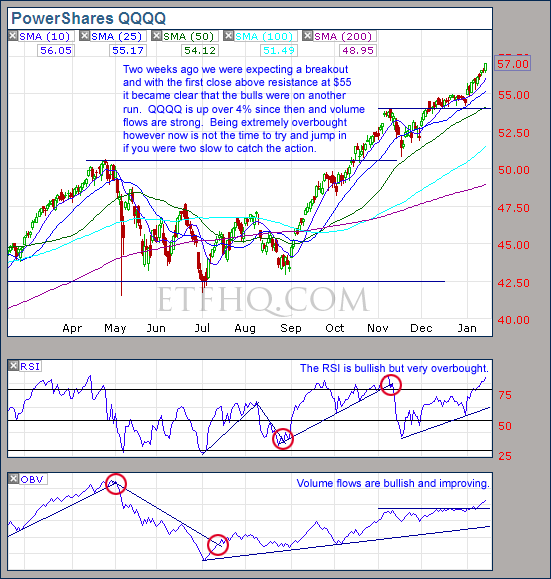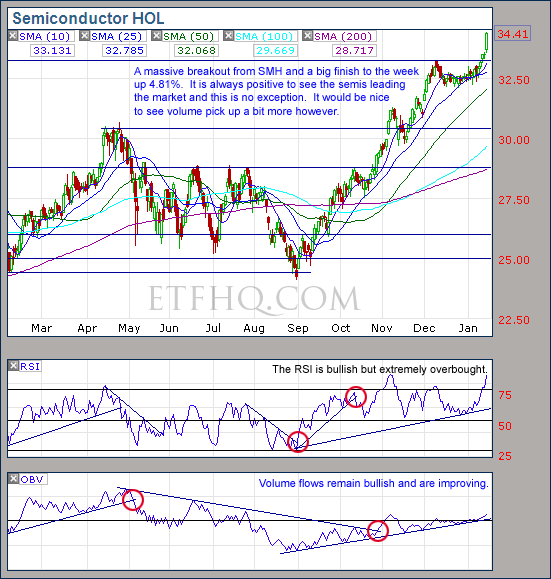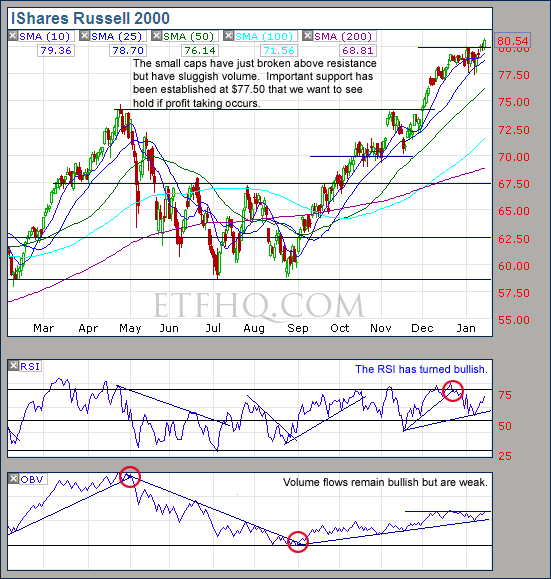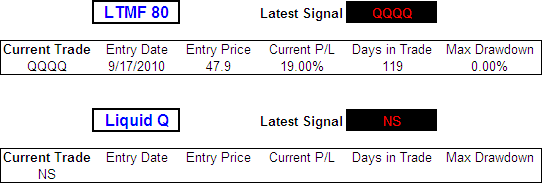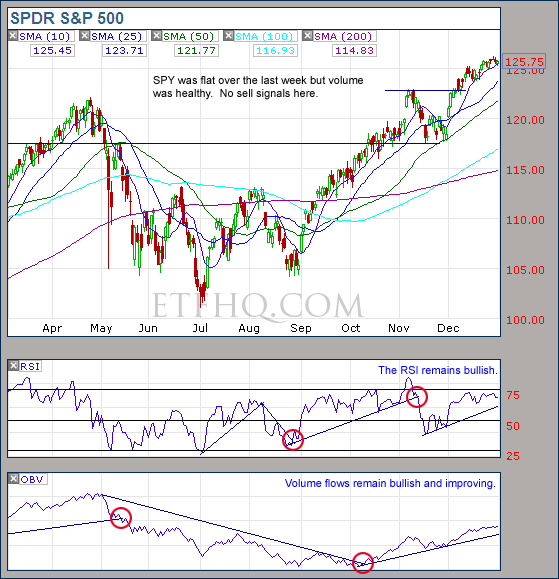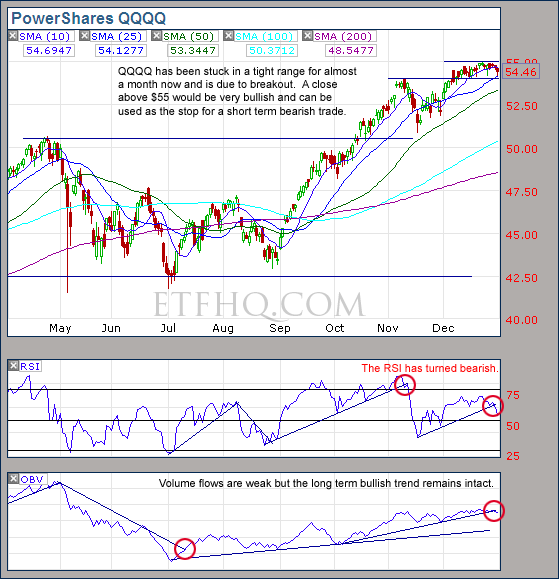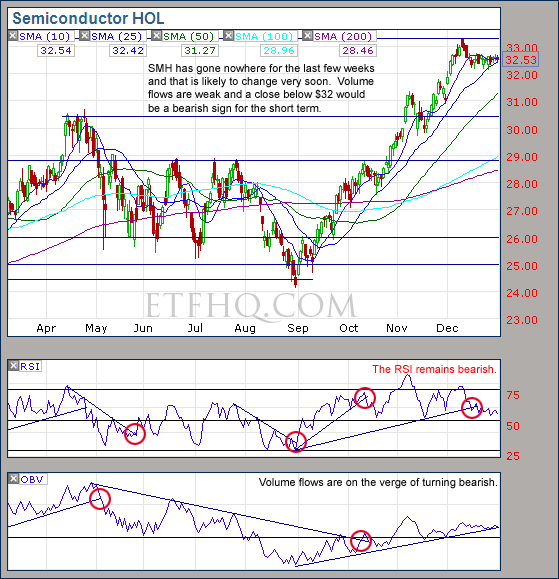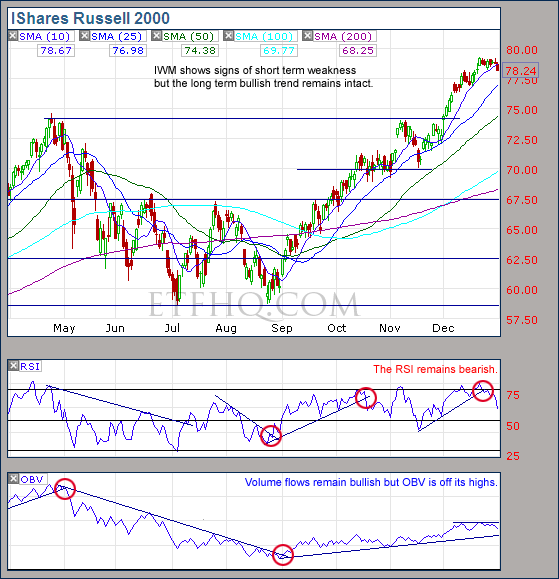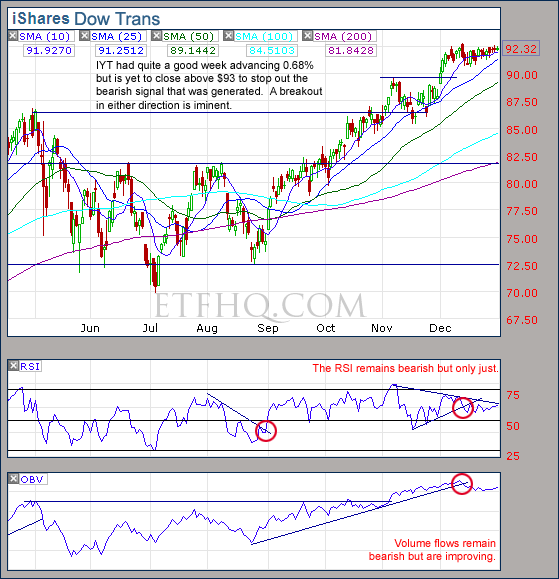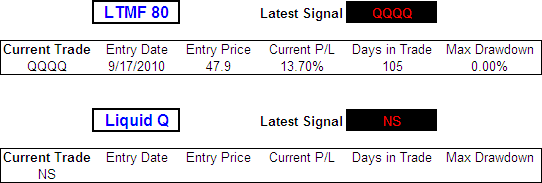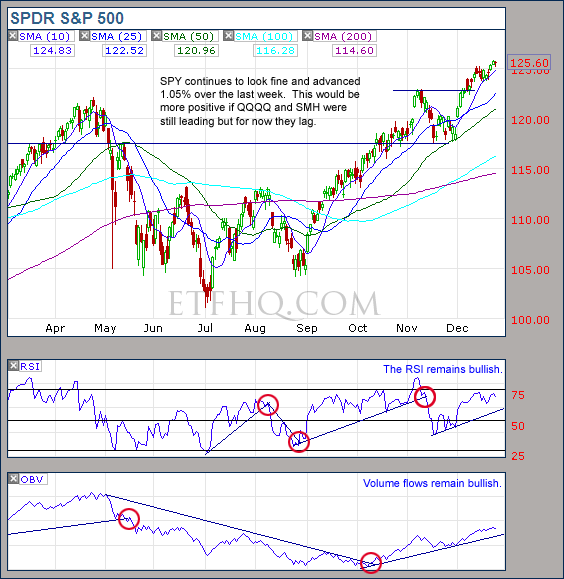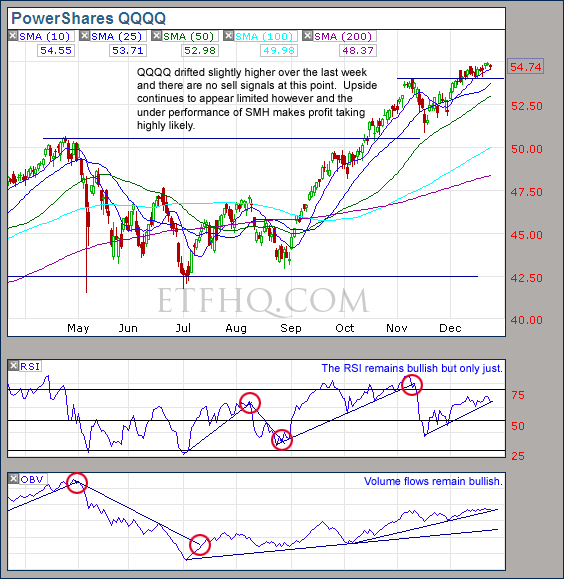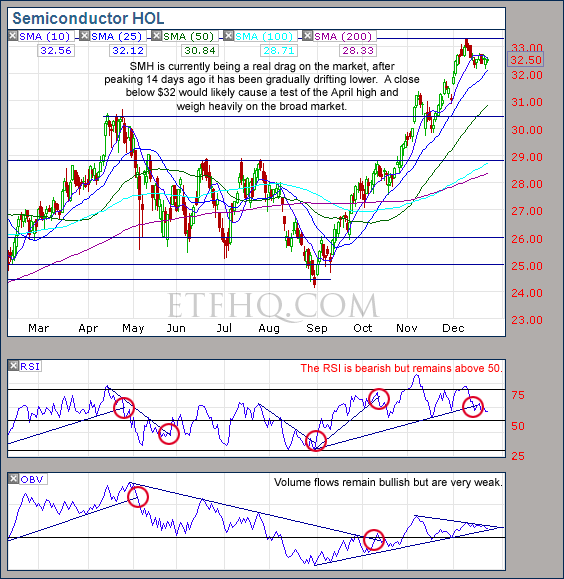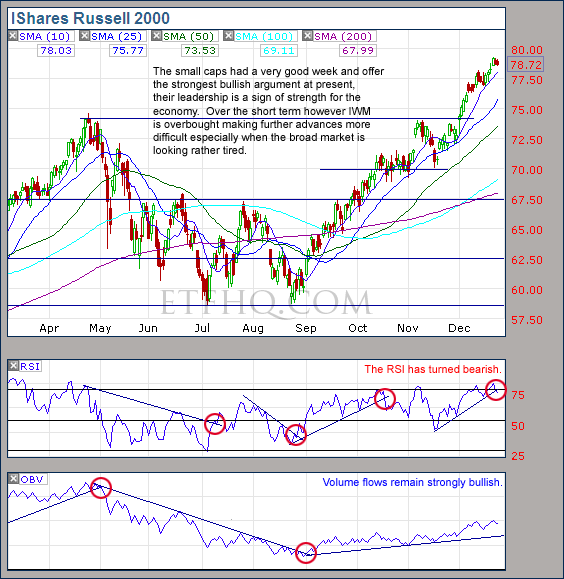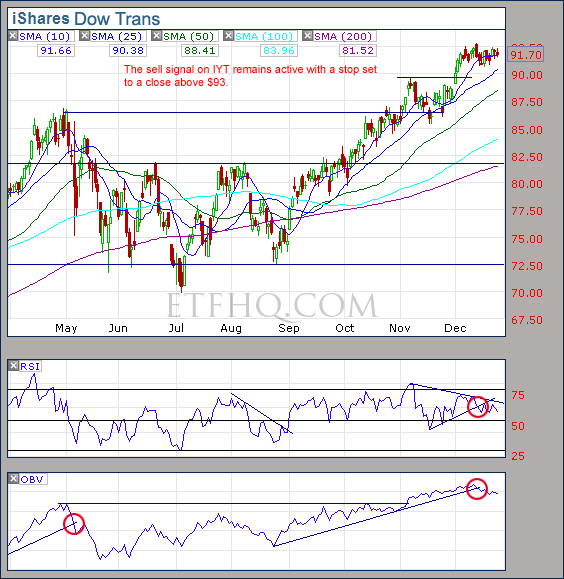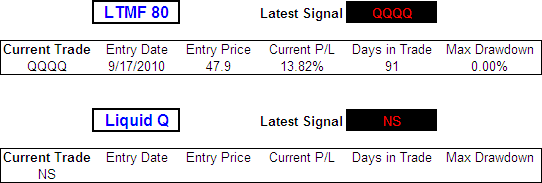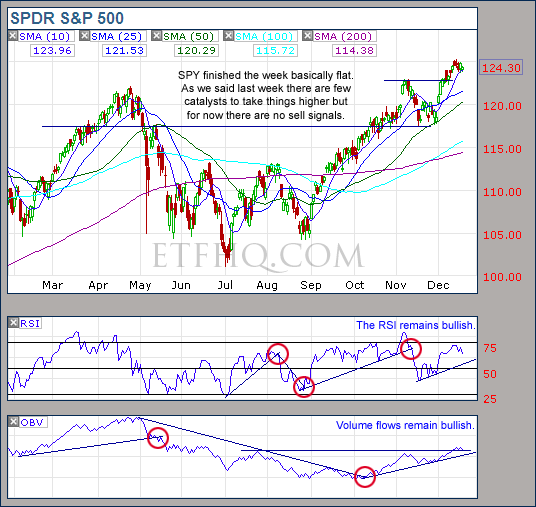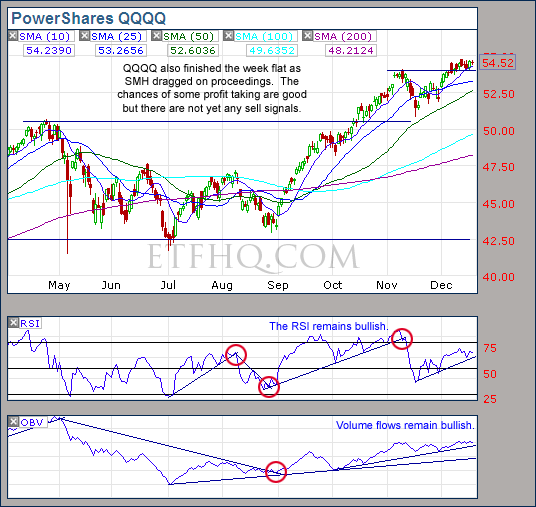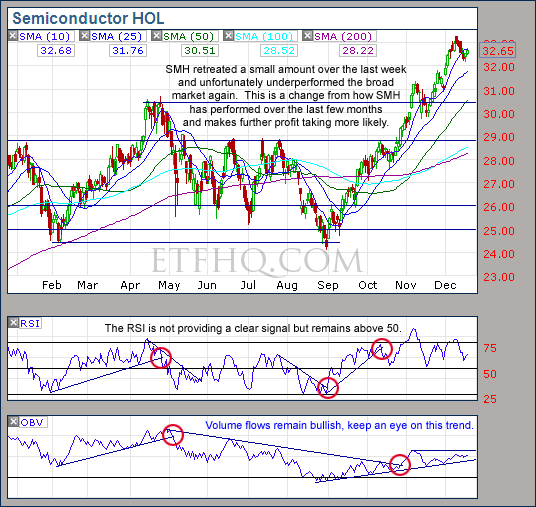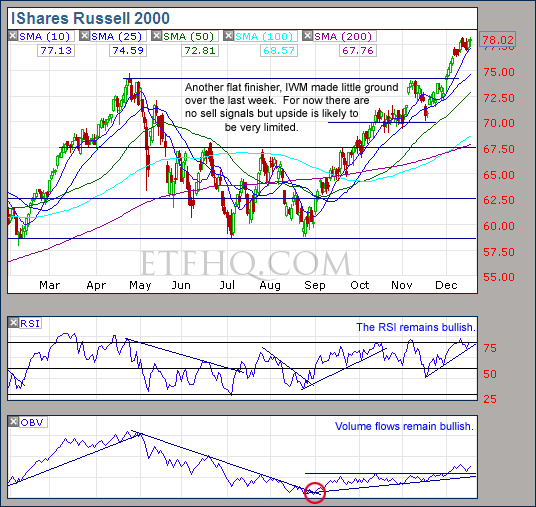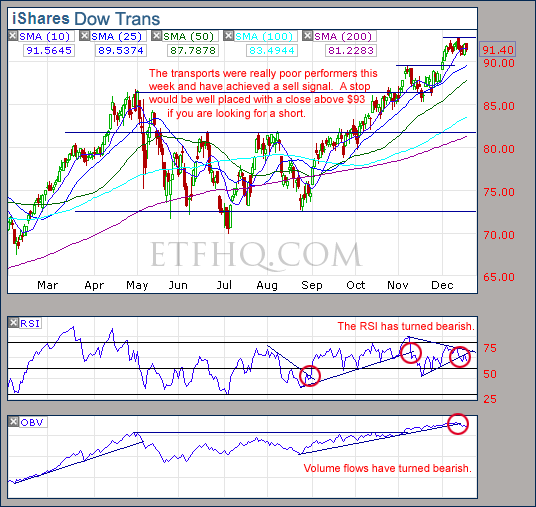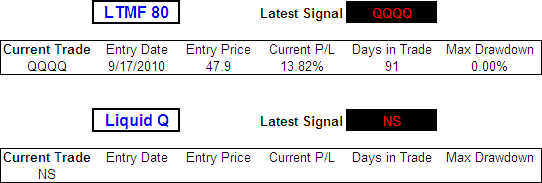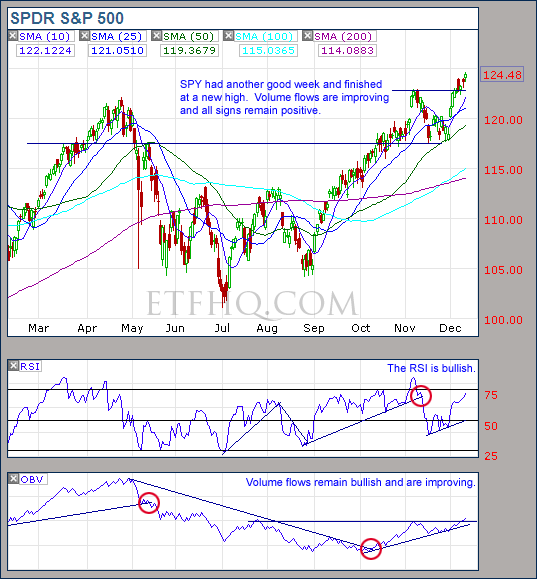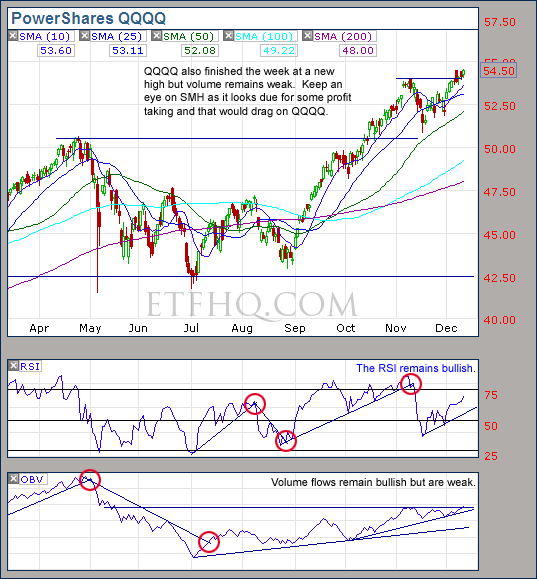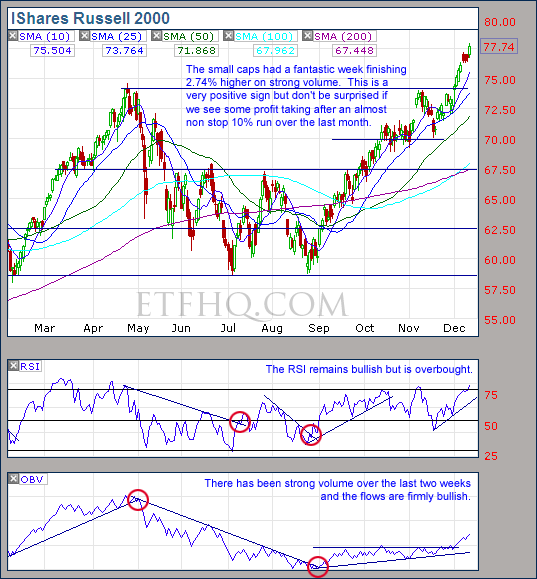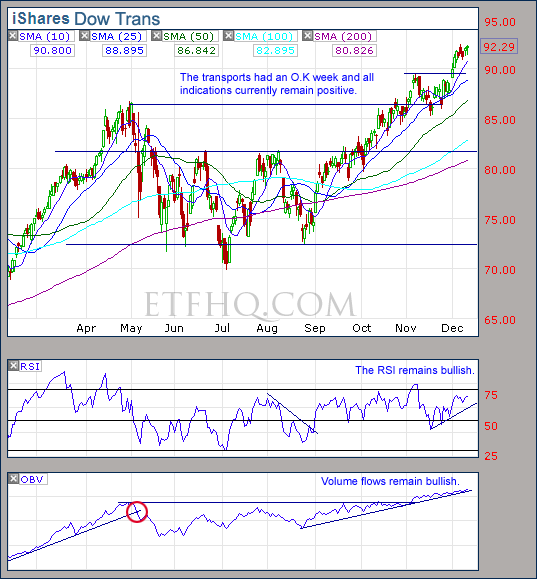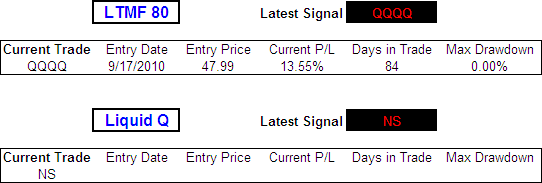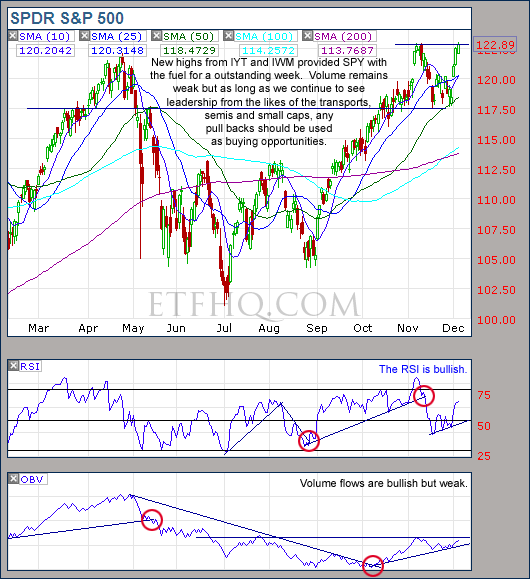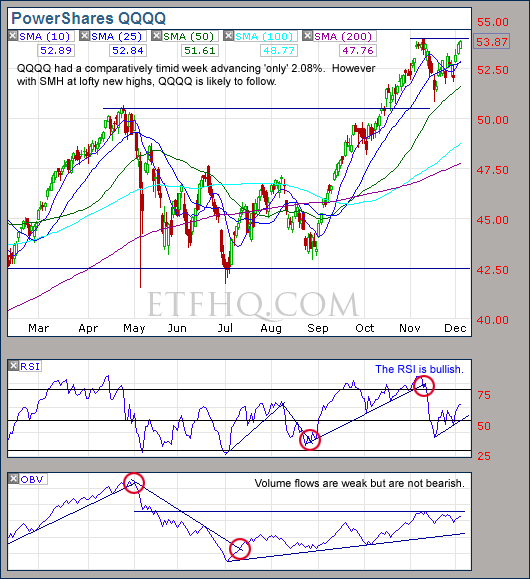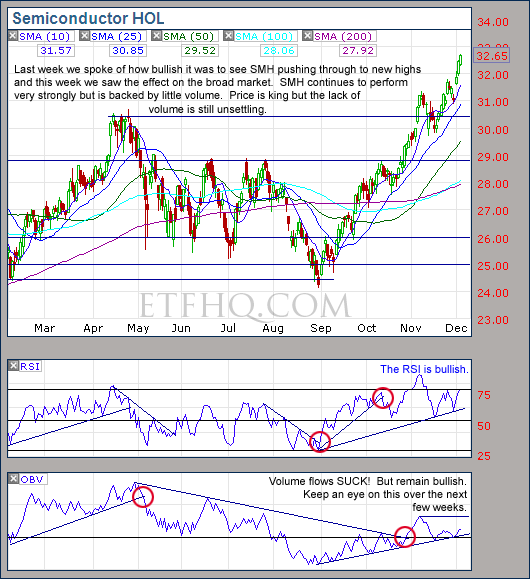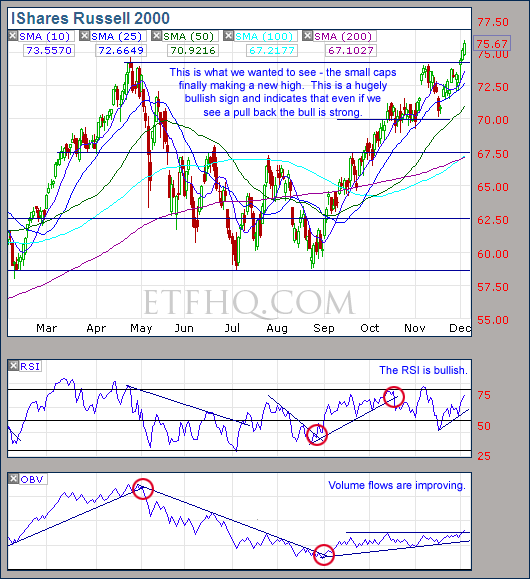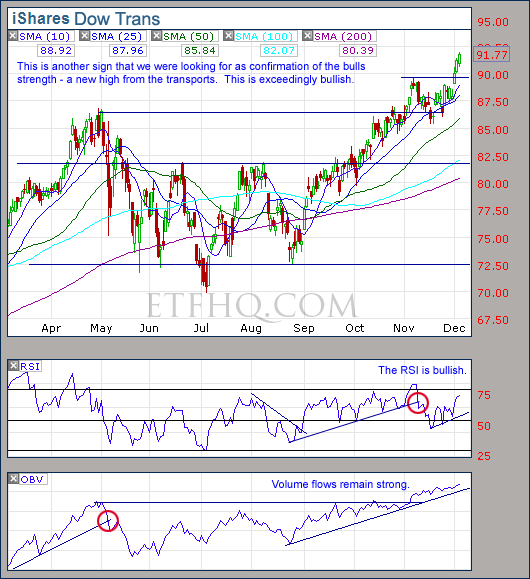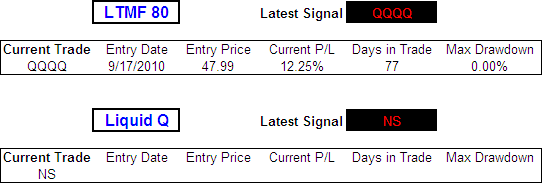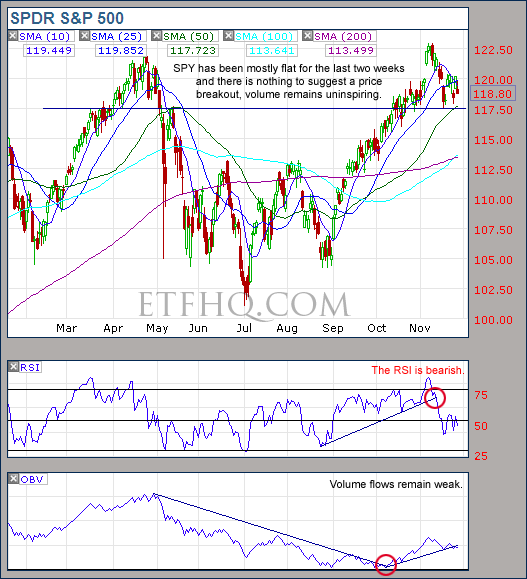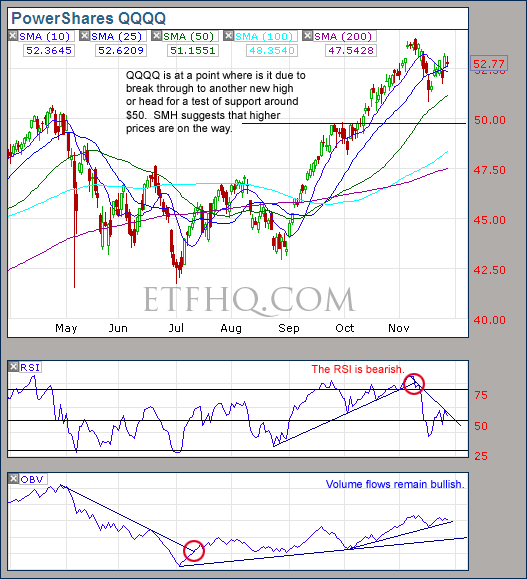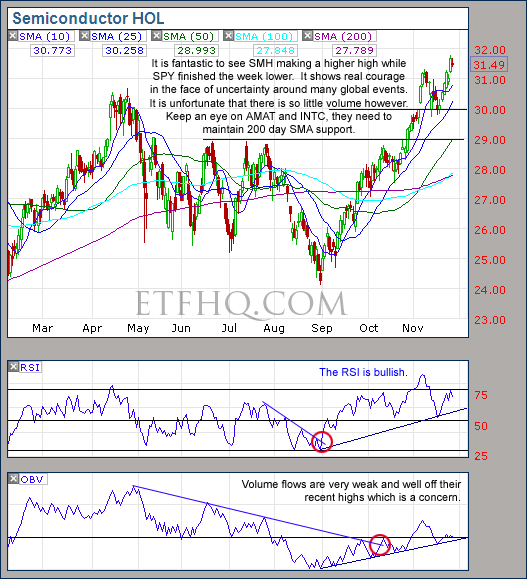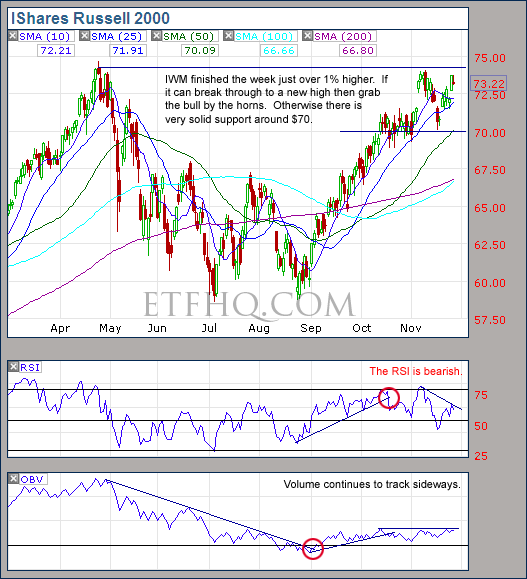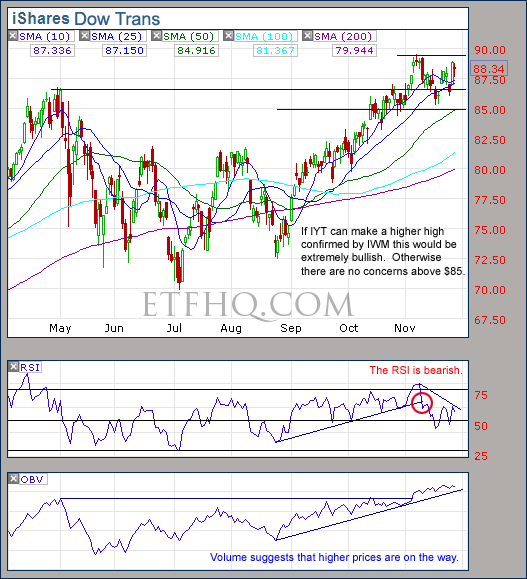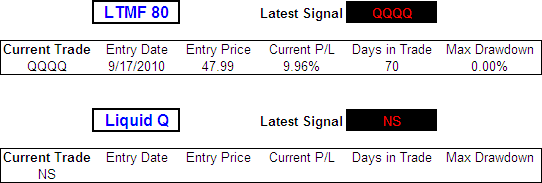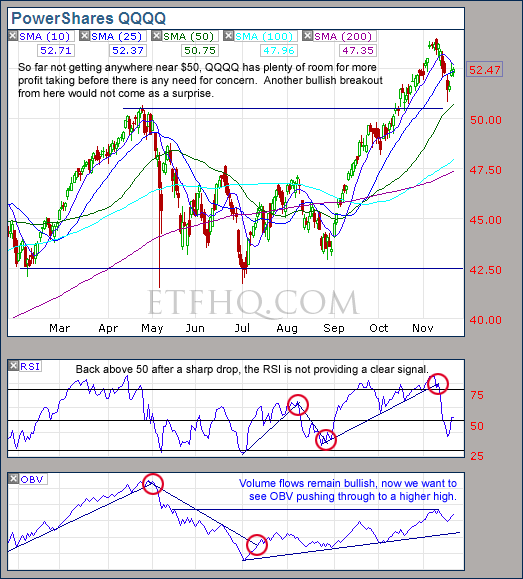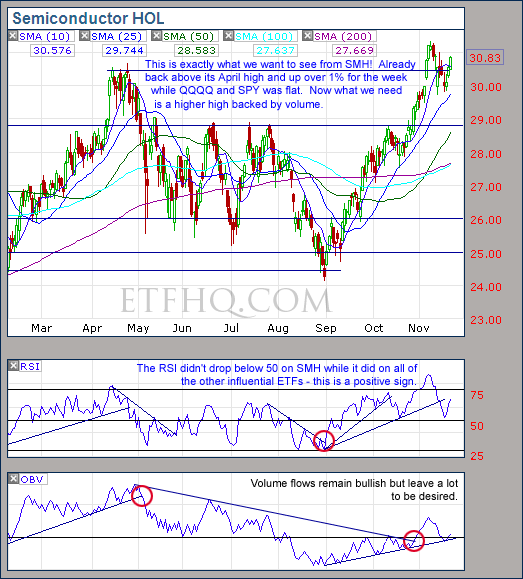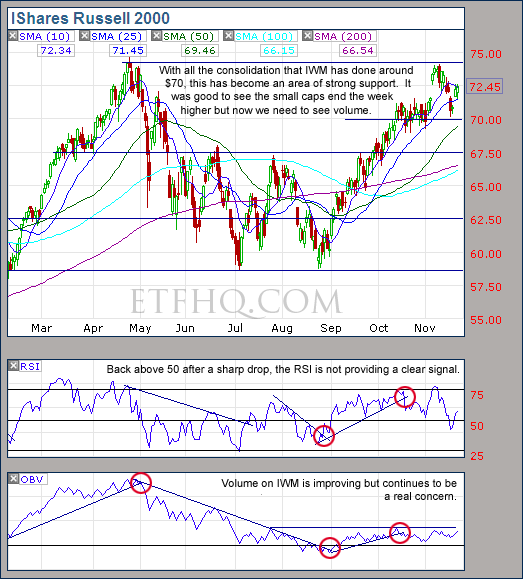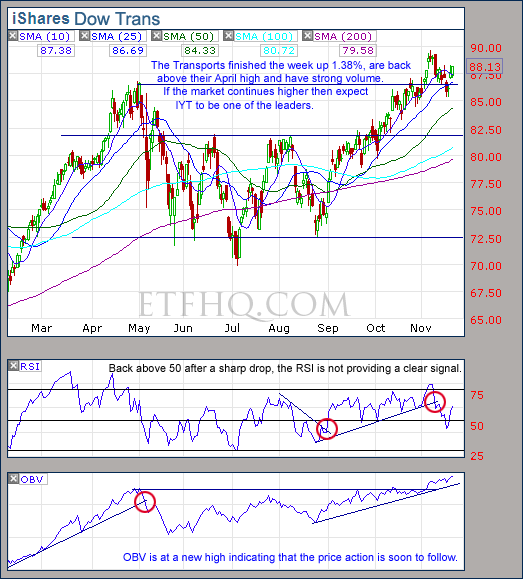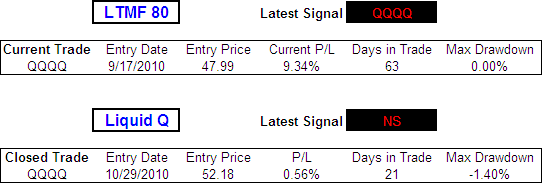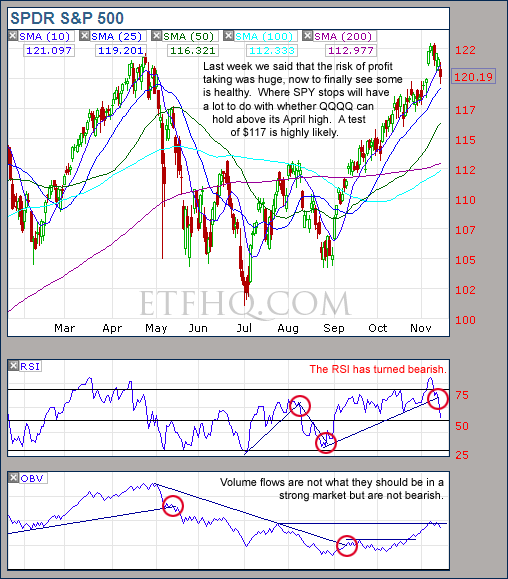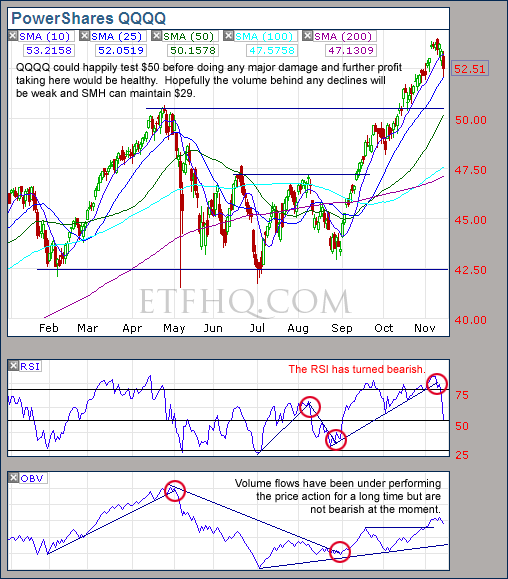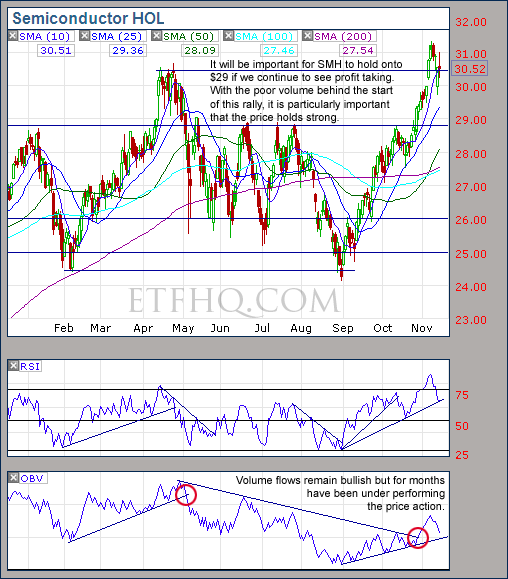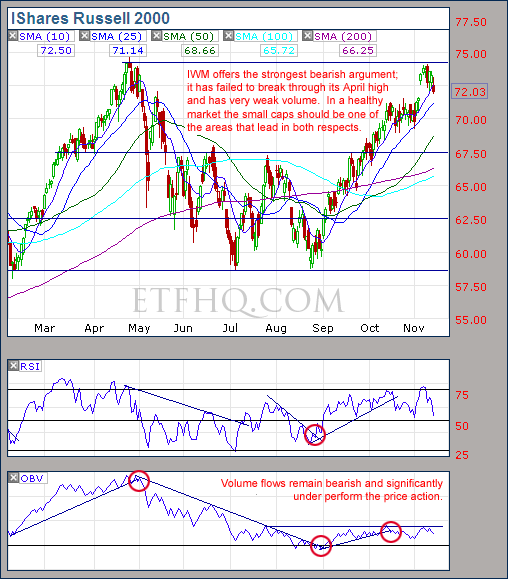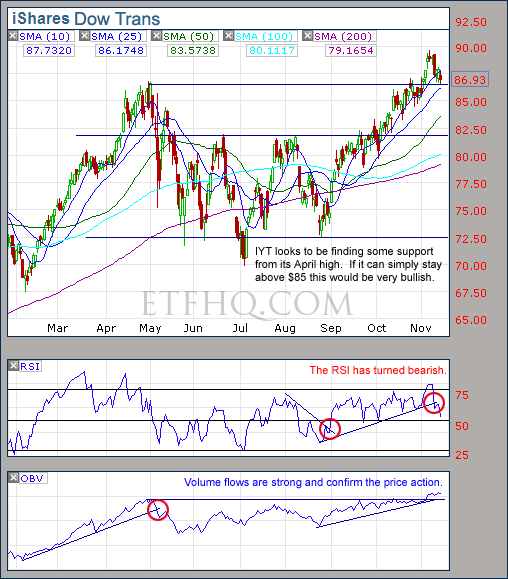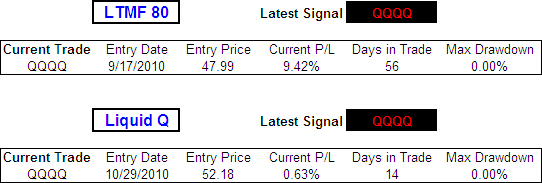January 24, 2011 – 04:32 am EST
It has been a while since we last saw declines as sudden and sharp as they were over the last week. But this is to be expected from a heavily overbought market and why we warned it was a dangerous time to initiate bullish positions. A rather interesting divergence between the small caps and the big caps occurred during the selling and could be an indication that the smart money is retreating to safety, lets take a closer look…
***Thanks for continuing to spread the word about this newsletter.
.
ETF % Change Comparison
.

Above you can see that IWM slashed over 4% off its price while DIA managed to advance 0.77% and finished the week at a new high. As the market risk increases a shift in performance tends to occur as the smart money moves out of the more economically sensitive areas like the small caps and semiconductors. You will notice however that SMH held together relatively well which is a good sign. If SMH can continue to maintain its strength this week then any profit taking is likely to be short lived.
.
Learn more – ETF % Change Comparison
.
![]()
.
A Look at the Charts
.
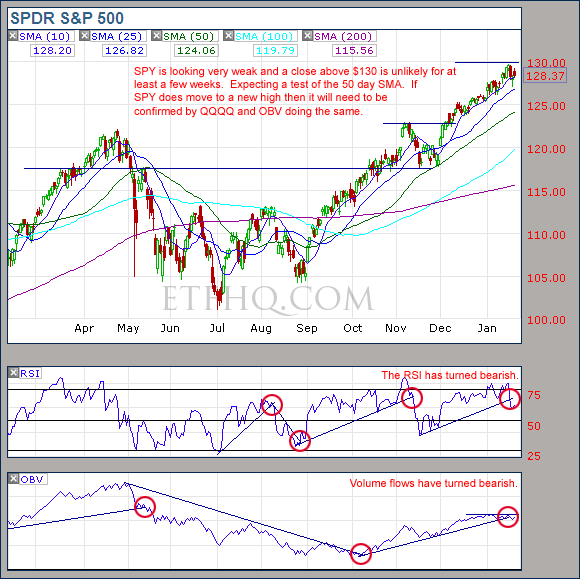
Both the RSI and volume flows have turned bearish on SPY, $130 is likely to stand as resistance.
.
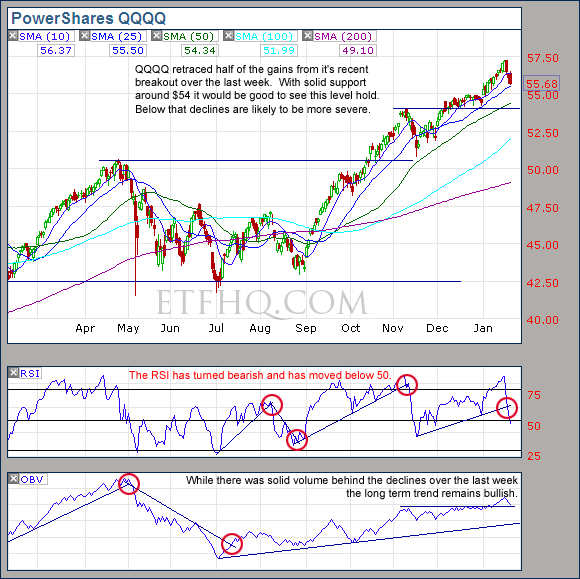
It would be healthy for QQQQ to test $54 or its 50 day SMA but below these levels things get more dangerous.
.
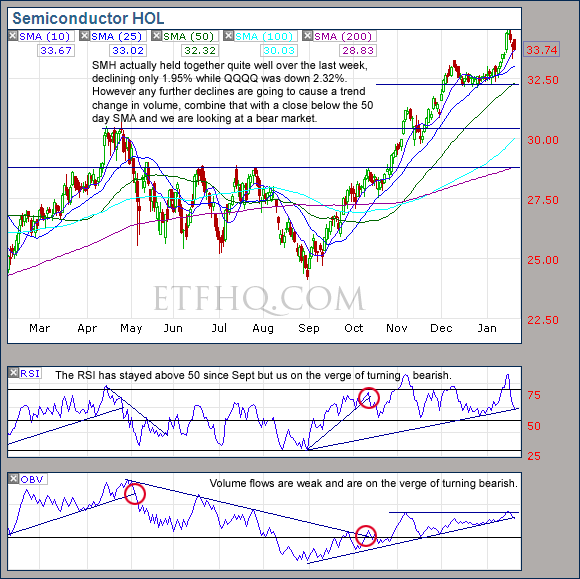
SMH is very close to turning bearish.
.
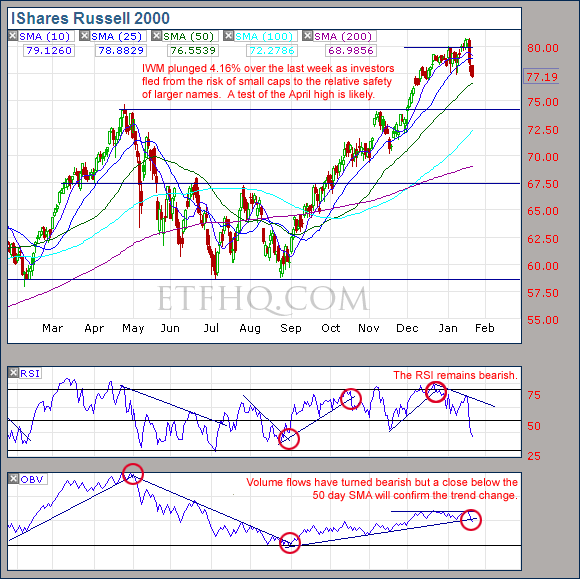
I will be keeping a close eye on IWM this week to see if the 50 day SMA will hold.
.
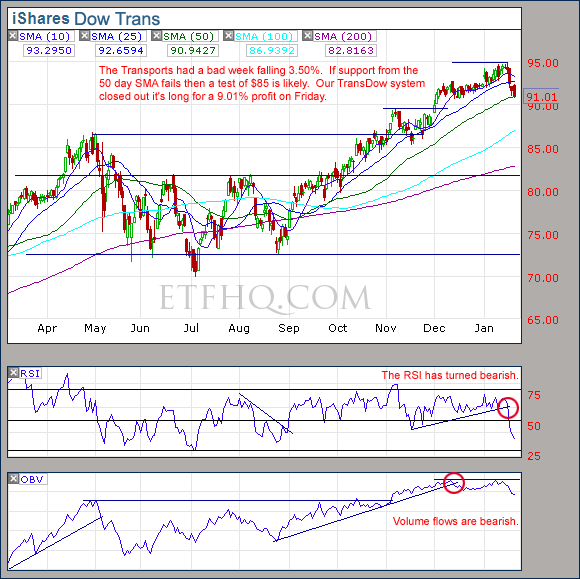
IYT is looking weak and we have taken our profits.
.
![]()
.
OM3 Weekly Indicator
.

IWM and IYT recieved several weeks of bear alerts indicating internal weakens before being the big losers last week. Still the buy signals remain active after over 20 weeks.
Learn more – The OM3 Indicator
.
![]()
.
TransDow & NasDow
.

The TransDow locked in a profit of 9.01% after 105 days but has now moved into cash. The Dow is now dominant over both the Transports and the NASDAQ, historically under these conditions the market has been extremely unproductive.
.
What the TransDow Readings tell us:
The TransDow measures dominance between the DJ Transportation Index (DJTI) and the Dow Jones Industrial Average (DJIA). In a strong market the more economically sensitive Transportation Index should be dominant over the DJIA.
Historically the DJTI has been dominant over the Dow 45% of the time. The annualized rate of return from the DJTI during this period was 18.47% with the biggest loss for one trade sitting at -13.27%. The annualized return from the DJIA during the periods it was dominant over the DJTI was just 4.06% and the biggest loss for one trade was -16.13%. A 4% stop-loss is applied to all trades adjusting positions only at the end of the week.
What the NasDow Readings tell us:
The NasDow measures dominance between the NASDAQ and the DJIA. Using the same theory behind the Trans Dow; in a strong market the more economically sensitive NASDAQ should be dominant over the DJIA.
Historically the NASDAQ has been dominant over the DJIA 44% of the time. Taking only the trades when the NASDAQ is above its 40 week moving average the annualized rate of return was 25.47% with the biggest loss for one trade sitting at –8.59%. The annualized rate on the DJIA during the periods it was dominant over the NASDAQ is just 8.88% and the biggest loss for one trade was –12.28%. A 8% stop-loss is applied to all trades adjusting positions only at the end of the week.
.
![]()
.
LTMF 80 & Liquid Q
.
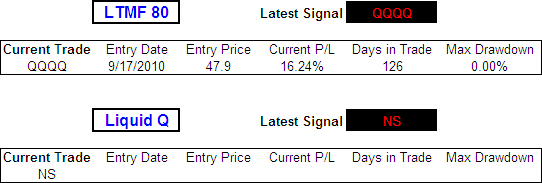
LTMF 80 continues to hold a position in QQQQ with a current profit of 16.24%. Liquid Q remains in cash.
.
Historical Stats:
.

.
How The LTMF 80 Works
LTMF stands for Long Term Market Forecaster. It reads volume flows relative to price action and looks for out performance of volume measured on a percentage basis over the prior 12 months. During a sustained rally the readings will reach high levels (near 100%) making it imposable for the volume reading to always outperform price so any reading above 80% will maintain the buy signal. This system has outperformed the market over the last 10 years but performance has been damaged by some nasty losses. It only produces buy signals and only for QQQQ.
How Liquid Q Works
Liquid Q completely ignores price action and instead measures the relative flow of money between a selection of economically sensitive and comparatively stable ares of the market. It looks for times when the smart money is confident and and can be seen by through volume investing heavily is more risky areas due to an expectation of expansion. This system has outperformed the market over the last 10 years and remained in cash through most of the major declines. It only produces buy signals and only for QQQQ. We will provide more performance details on the web site for these systems soon.
.
![]()
.
Summary
A number of excuses to sell have developed over the last week with bearish volume flows and RSI from SPY, IWM and IYT. SMH is on the verge of turning bearish while the TransDow has moved to cash after locking in a 9% profit on the transports. What we are yet to see however is the loss of any major support. Keep an eye on the 50 day moving averages across the board and how SMH behaves. The semis held together comparatively well over the last week and if they can continue to do so then any declines are likely to be short lived.
Any disputes, questions, queries, comments or theories are most welcome in the comments section below.
.
Cheers
Derry
And the Team @ ETF HQ
“Equipping you to win on Wall St so that you can reach your financial goals.”
.
![]()
.
Quote of the Day:
“A nation that continues year after year to spend more money on military defense than on programs of social uplift is approaching spiritual doom.” – Martin Luther King, Jr.


